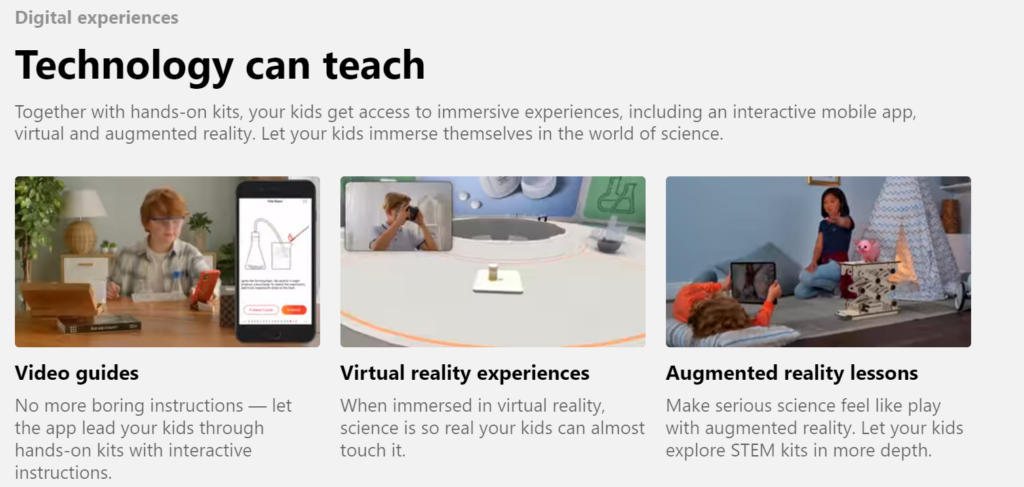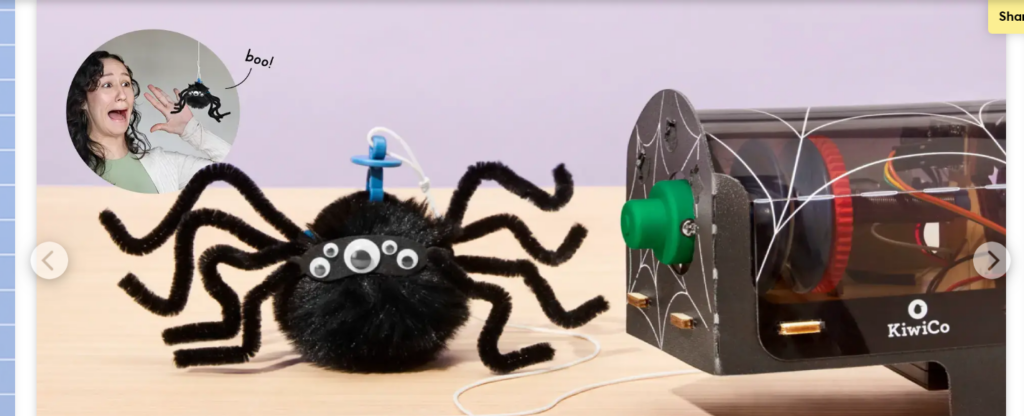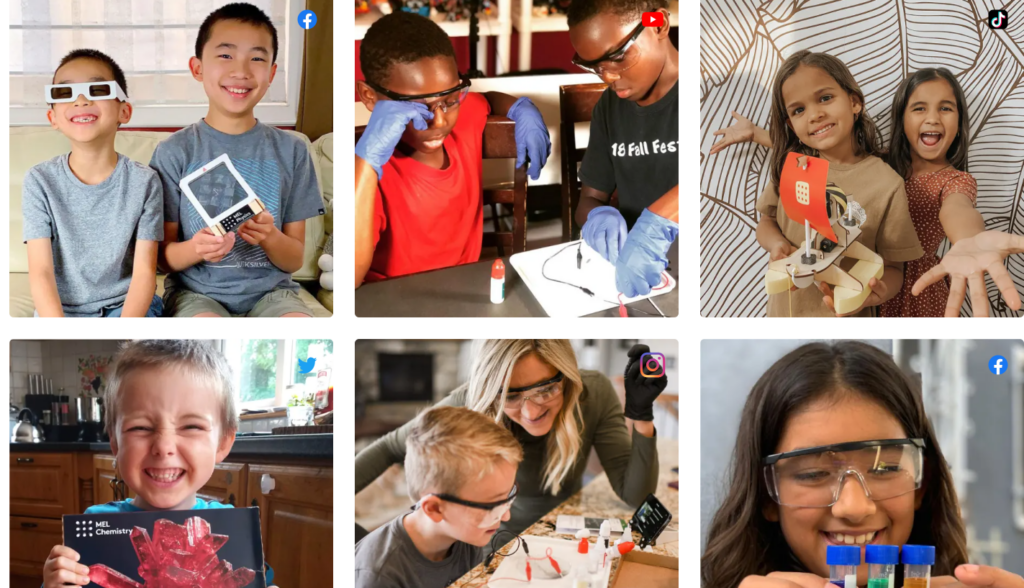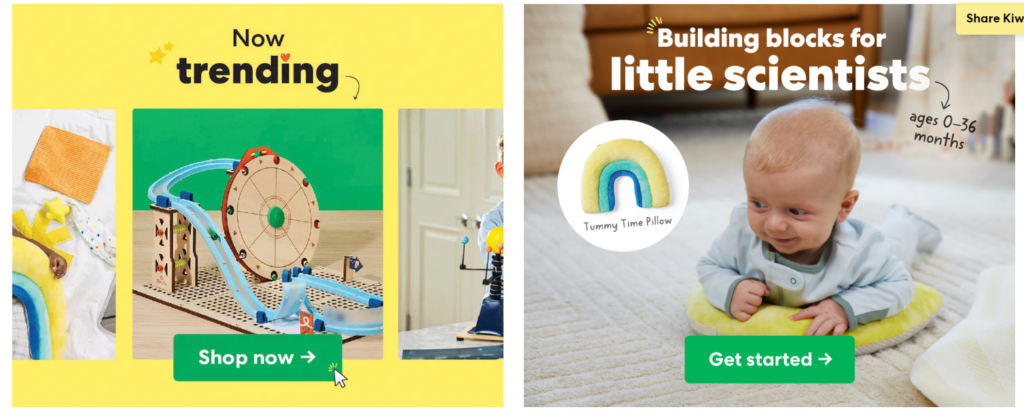In the modern world, education is no longer limited to the classroom. With the rising demand for STEM (Science, Technology, Engineering, and Mathematics) education, subscription-based learning kits have gained popularity as a fun and interactive way to introduce these subjects to children.
MEL Science and KiwiCo are two major players in the world of science-based subscription kits, each offering unique educational experiences. While both aim to foster creativity, curiosity, and a love for science, they differ significantly in their approach, audience, and content. This post will provide a comprehensive comparison of MEL Science and KiwiCo, helping you decide which platform is better suited for your child’s learning journey.
Introduction
Hands-on learning is a proven method to engage children in STEM subjects. Both MEL Science and KiwiCo offer kits that provide hands-on experiments, fostering creative thinking and problem-solving. These subscription boxes are designed to make learning interactive and enjoyable, taking education out of textbooks and into the real world.
While MEL Science focuses on delivering comprehensive, chemistry-heavy kits for older children and teenagers, KiwiCo caters to a broader audience with boxes that range from toddlers to adults. Each has its strengths and specific offerings, and this detailed comparison will explore both platforms’ content, features, pricing, and overall value.
Overview of MEL Science
Founded in 2015, MEL Science specializes in delivering monthly subscription boxes focused on hands-on experiments, particularly in the field of chemistry. The platform is known for its unique integration of virtual reality (VR) to enhance learning. MEL Science caters primarily to older children and teenagers (ages 9-16), offering educational kits that help students delve into subjects such as chemistry, physics, and engineering.

Each MEL Science kit contains multiple experiments, complete with all the necessary materials and equipment to perform them safely at home. The experiments are designed to encourage curiosity, improve critical thinking, and give learners a deeper understanding of scientific concepts. The platform also offers a detailed curriculum that follows international science standards, making it suitable for homeschooling or supplementing school education.
Overview of KiwiCo
KiwiCo, founded in 2011, takes a more holistic approach to education, offering kits that cater to a wide age range, from toddlers to adults. KiwiCo’s subscription boxes focus on various themes, including science, art, engineering, and even geography. The platform’s goal is to spark creativity and innovation through hands-on projects that teach STEM concepts in a fun and accessible way.

Each month, KiwiCo delivers a themed box that contains all the materials and instructions needed to complete a specific project. These projects are designed to be interactive and fun while subtly teaching kids STEM principles. With its wide variety of crates and age-specific categories, KiwiCo provides a more tailored experience for different learning stages, making it a popular choice for families with children of varying ages.
Features Comparison: MEL Science vs. KiwiCo
1. Age Range and Audience
MEL Science:
- Primarily targets older children and teens (9-16 years old).
- The kits are more suitable for learners who are ready to tackle complex scientific concepts, particularly in chemistry and physics.
- Experiments require more parental guidance, especially for younger children, due to the use of chemicals and more advanced scientific tools.
KiwiCo:
- Offers subscription boxes for all age groups, ranging from toddlers (age 0-2) to adults.
- Boxes are divided into various categories, such as Panda Crate (ages 0-2), Koala Crate (ages 2-4), and Eureka Crate (ages 14+), making it easy to choose the appropriate box based on the child’s developmental stage.
- The variety of age-specific options makes KiwiCo suitable for families with multiple children.
2. Subject Matter and Content
MEL Science:
- Focuses heavily on chemistry and physics. The kits contain in-depth experiments that align with international science curricula.
- The inclusion of virtual reality (VR) headsets and apps enhances the learning experience by providing 3D simulations of chemical reactions and scientific processes.
- MEL Science offers structured learning paths, ensuring that experiments build upon previous lessons and help learners develop a deep understanding of scientific concepts.
KiwiCo:
- KiwiCo covers a wide range of subjects, including science, art, engineering, and crafts. While some crates are STEM-focused, others blend creativity and design into the projects.
- Each crate has a unique theme, such as building a working hydraulic arm or creating a solar system model. The content varies widely, depending on the age group.
- KiwiCo is more about introducing broad concepts and encouraging creativity, with projects that are designed to be fun and engaging for younger children.
3. Hands-On Learning Experience
MEL Science:
- Experiments in MEL Science kits are designed to be more advanced, with a focus on critical thinking, problem-solving, and real-world applications of scientific principles.
- Kits often require more parental supervision due to the complexity of the experiments and the use of chemicals.
- The hands-on experience is complemented by the MEL Science VR app, which provides interactive 3D models and tutorials for enhanced learning.
KiwiCo:
- KiwiCo’s projects are highly interactive, but they are generally simpler and more accessible to younger learners.
- The hands-on activities focus more on creative problem-solving and the application of basic STEM principles in a fun way, such as building toys or gadgets.
- KiwiCo’s crates are designed to be easy to use with minimal supervision, making them great for independent learning.
4. Technology Integration
MEL Science:
- One of MEL Science’s standout features is its use of virtual reality. The MEL Science VR app allows learners to explore scientific concepts in a 3D virtual environment.
- VR enhances the overall learning experience by visualizing complex scientific concepts, such as the atomic structure of molecules or the behavior of electrons in a chemical reaction.

KiwiCo:
- KiwiCo does not incorporate advanced technology like virtual reality but instead focuses on hands-on projects that rely on creativity, craftsmanship, and problem-solving.
- KiwiCo offers instructional videos and online content through its app, but its projects do not include technology-based learning like MEL Science.

Pricing Comparison: MEL Science vs. KiwiCo
MEL Science Pricing:
- MEL Chemistry:
- Price: $34.90 per month.
- Frequency: Monthly, includes 2-3 experiments related to chemistry, along with a VR app and supplementary content.
- MEL Physics:
- Price: $34.90 per month.
- Frequency: Monthly, covering advanced physics topics like electricity, magnetism, and mechanics.
- MEL STEM:
- Price: $34.90 per month.
- Frequency: Monthly, focusing on engineering, technology, and applied science.
- Annual Subscription:
- MEL Science offers a 10% discount for annual subscriptions, bringing the price down to $29.90 per month.
KiwiCo Pricing:
- Monthly Subscription:
- Price: $19.95 to $29.95 per month, depending on the crate type.
- Crates like Panda Crate (ages 0-2) and Koala Crate (ages 2-4) start at $19.95, while Eureka Crate and Maker Crate (ages 14+ and adults) are priced higher at $29.95 per month.
- Annual Subscription:
- KiwiCo offers a 17% discount for subscribers who opt for an annual plan, bringing down the cost per crate to as low as $16.95 per month.
- Shipping:
- KiwiCo typically offers free shipping within the U.S., while international shipping incurs an additional fee.
FAQs
1. Which platform is better for younger children?
KiwiCo is better suited for younger children, as it offers crates for toddlers and preschoolers. MEL Science, on the other hand, is more appropriate for older children (ages 9+) due to the complexity of the experiments.
2. Do both platforms require parental supervision?
MEL Science typically requires more parental supervision, especially for chemistry experiments involving chemicals. KiwiCo’s projects are simpler and often designed for independent play, though younger children will still benefit from adult guidance.
3. Can I pause or cancel my subscription?
Yes, both MEL Science and KiwiCo allow you to pause or cancel your subscription at any time. Additionally, both platforms offer a money-back guarantee for those who are unsatisfied with the service.
4. Do I need any additional materials to complete the experiments?
Both MEL Science and KiwiCo provide nearly everything needed for the experiments. However, you may need common household items like water, batteries, or scissors for some projects.
5. How long do the experiments take?
MEL Science experiments can take anywhere from 30 minutes to 1 hour, depending on the complexity of the task. KiwiCo’s projects are typically shorter and can often be completed within 30-45 minutes.
Conclusion
When deciding between MEL Science and KiwiCo, both platforms offer distinct and engaging learning experiences, but they cater to different age groups, learning styles, and levels of complexity. MEL Science excels in providing comprehensive, advanced STEM education for older children and teens, with a specific focus on chemistry, physics, and engineering. Its integration of virtual reality (VR) adds a layer of interactivity that enhances the learning experience, making complex scientific concepts easier to grasp. The subscription boxes are designed to follow a structured curriculum, making them an excellent option for those seeking a more in-depth and rigorous STEM education.
On the other hand, KiwiCo is a more versatile option, with a wide range of crates catering to various age groups, from toddlers to adults. Its focus on hands-on creativity and broad STEM topics, along with its more accessible pricing, makes it an ideal choice for families with children of different ages. KiwiCo’s projects are generally simpler and more playful, making it a great platform for introducing young learners to STEM concepts through fun, engaging activities.
If your goal is to provide your child with a solid foundation in STEM education, especially in the fields of chemistry and physics, MEL Science is the superior choice for older learners who are ready for more advanced, hands-on experiments. However, if you’re looking for a broader range of educational experiences that span from creative projects to science and engineering, with options for younger children, KiwiCo offers more flexibility and variety.
Ultimately, the decision comes down to your child’s age, interests, and learning goals. Both platforms deliver high-quality content, but whether you choose the depth of MEL Science or the versatility of KiwiCo, your child will benefit from a stimulating, hands-on learning experience that encourages curiosity and creativity in STEM.



